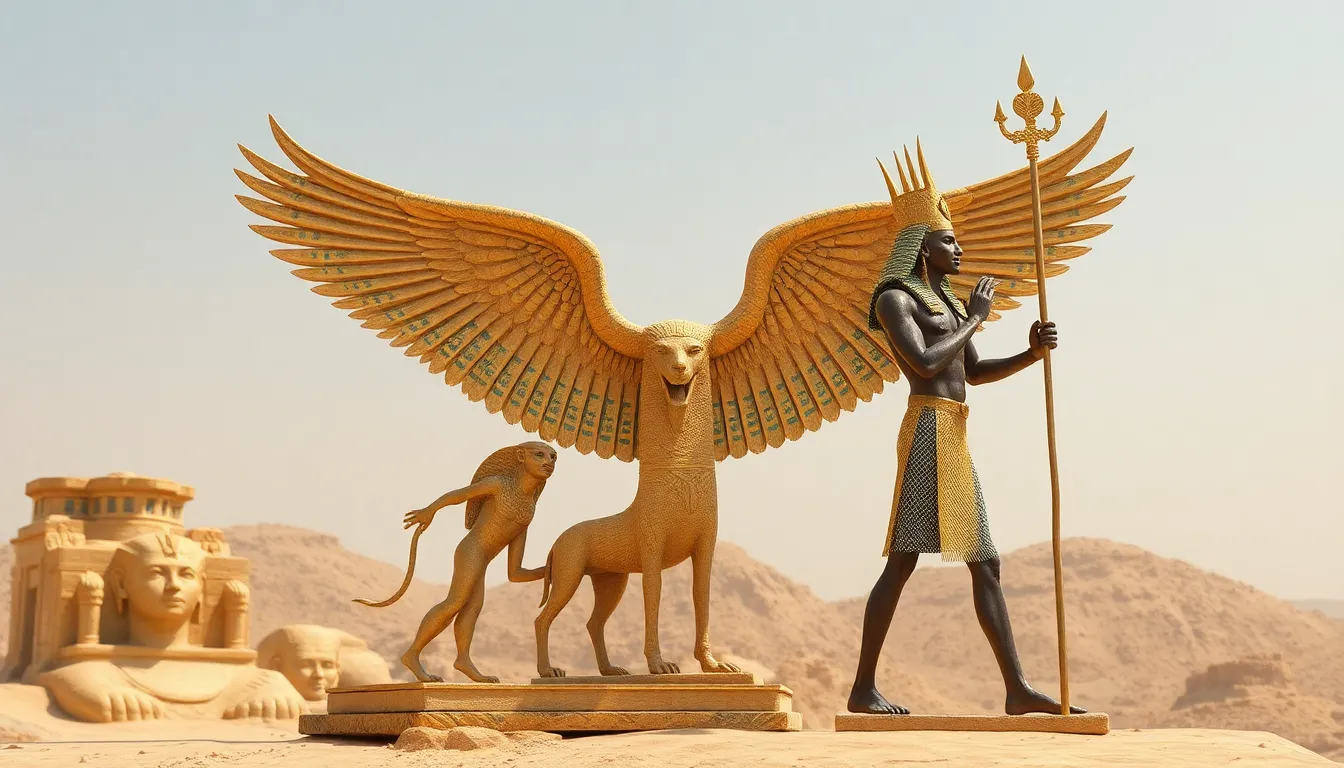The Role of Myths in Egyptian Deity Worship
I. Introduction
Myths play a crucial role in the context of religion, serving as narratives that explain the beliefs, values, and practices of a culture. In the realm of Egyptian mythology, these stories are not merely fanciful tales; they are foundational elements that shaped the spiritual landscape of ancient Egypt. Egyptian mythology encompasses a rich tapestry of gods, goddesses, and mythical events that have significant historical and cultural implications.
The purpose of this article is to explore the intricate relationship between myths and deity worship in ancient Egypt, highlighting how these narratives influenced religious practices, societal norms, and the understanding of the cosmos.
II. Historical Context of Egyptian Mythology
The origins of Egyptian myths can be traced back to the early dynastic period, where they began to take shape as oral traditions. Over time, these stories were codified in texts and inscriptions, reflecting the beliefs of various communities across Egypt.
Key periods in Egyptian history, such as the Old Kingdom, Middle Kingdom, and New Kingdom, significantly influenced the development of mythology. Each era brought forth unique interpretations and adaptations of myths, showcasing the dynamic nature of these narratives.
Myths served as a unifying force among the diverse cultures within ancient Egypt, helping to forge a common identity among the people despite regional differences.
III. Major Egyptian Deities and Their Myths
Among the pantheon of Egyptian deities, several figures stand out due to their prominence and the richness of their associated myths:
- Ra: The sun god, embodying creation and life.
- Osiris: The god of the afterlife, representing resurrection and regeneration.
- Isis: The goddess of magic and motherhood, known for her protective nature.
- Horus: The sky god, often depicted as a falcon, symbolizing kingship and protection.
Each of these deities is associated with key myths that explain their roles and significance:
- Ra’s daily journey across the sky, symbolizing the cycle of life and death.
- Osiris’s death and resurrection, which underscores the themes of renewal and the afterlife.
- Isis’s quest to resurrect Osiris, highlighting themes of love, loyalty, and the power of magic.
- Horus’s battle against Seth, representing the struggle between order and chaos.
The symbolism and themes within these myths often reflect the values and beliefs of ancient Egyptian society, including the importance of the afterlife, the cyclical nature of existence, and the balance between chaos and order.
IV. Myths as a Tool for Religious Instruction
Myths served a didactic purpose, conveying moral values and ethical lessons to the ancient Egyptians. Through storytelling, these narratives taught the importance of virtues such as honesty, loyalty, and justice.
Furthermore, myths provided explanations for natural phenomena, helping people make sense of the world around them. For instance, the myth of Ra’s journey across the sky explains the cycle of day and night, while the inundation of the Nile is often linked to the tears of Isis mourning her husband Osiris.
The role of storytelling extended to temple rituals and festivals, where these myths were recited and reenacted, reinforcing their significance in the religious practices of the time.
V. The Ritualization of Myths in Worship Practices
The influence of myths was evident in the architecture and iconography of temples. Structures were often designed to reflect mythological narratives, with carvings and statues depicting gods and their associated stories.
During religious festivals, myths were performed in rituals, bringing the narratives to life for the worshippers. These performances fostered a communal experience that deepened the connection between the people and their deities.
The connection between myth and daily worship activities can be seen in the rituals that honored the gods, invoking their presence and favor through prayers and offerings.
VI. The Relationship Between Myth and Cosmology
Egyptian cosmology is deeply intertwined with mythology, particularly through creation myths that explain the origins of the universe. These narratives often depict a primordial chaos from which order emerged, reflecting the Egyptians’ understanding of their world.
The concepts of Ma’at (order) and Isfet (chaos) are central to Egyptian thought, with many myths illustrating the struggle to maintain balance in the universe.
Additionally, the cyclical nature of myths mirrors the cyclical patterns observed in nature, such as the flooding of the Nile and the changing seasons, reinforcing the Egyptians’ belief in the interconnectedness of all life.
VII. The Evolution and Adaptation of Myths
Over different dynasties, Egyptian myths evolved, adapting to changing political and social landscapes. New gods emerged, and existing stories were reinterpreted to align with contemporary beliefs.
Foreign influences, particularly during periods of conquest and trade, introduced new elements into Egyptian mythology, leading to a fusion of deities and myths.
In modern times, the legacy of Egyptian myths continues to resonate in contemporary culture, inspiring literature, art, and popular media, showcasing their enduring relevance.
VIII. Conclusion
In summary, myths played a pivotal role in Egyptian deity worship, serving as vehicles for religious instruction, cultural identity, and cosmological understanding. The narratives surrounding the gods not only shaped ancient Egyptian society but also laid the groundwork for future interpretations of their beliefs.
Reflecting on the enduring nature of these myths, it is clear that they remain significant in both historical and cultural contexts, offering insights into the human experience and our quest for meaning.
Ultimately, the relevance of Egyptian mythology today lies in its ability to connect us to ancient wisdom and the universal themes that continue to resonate through time.




